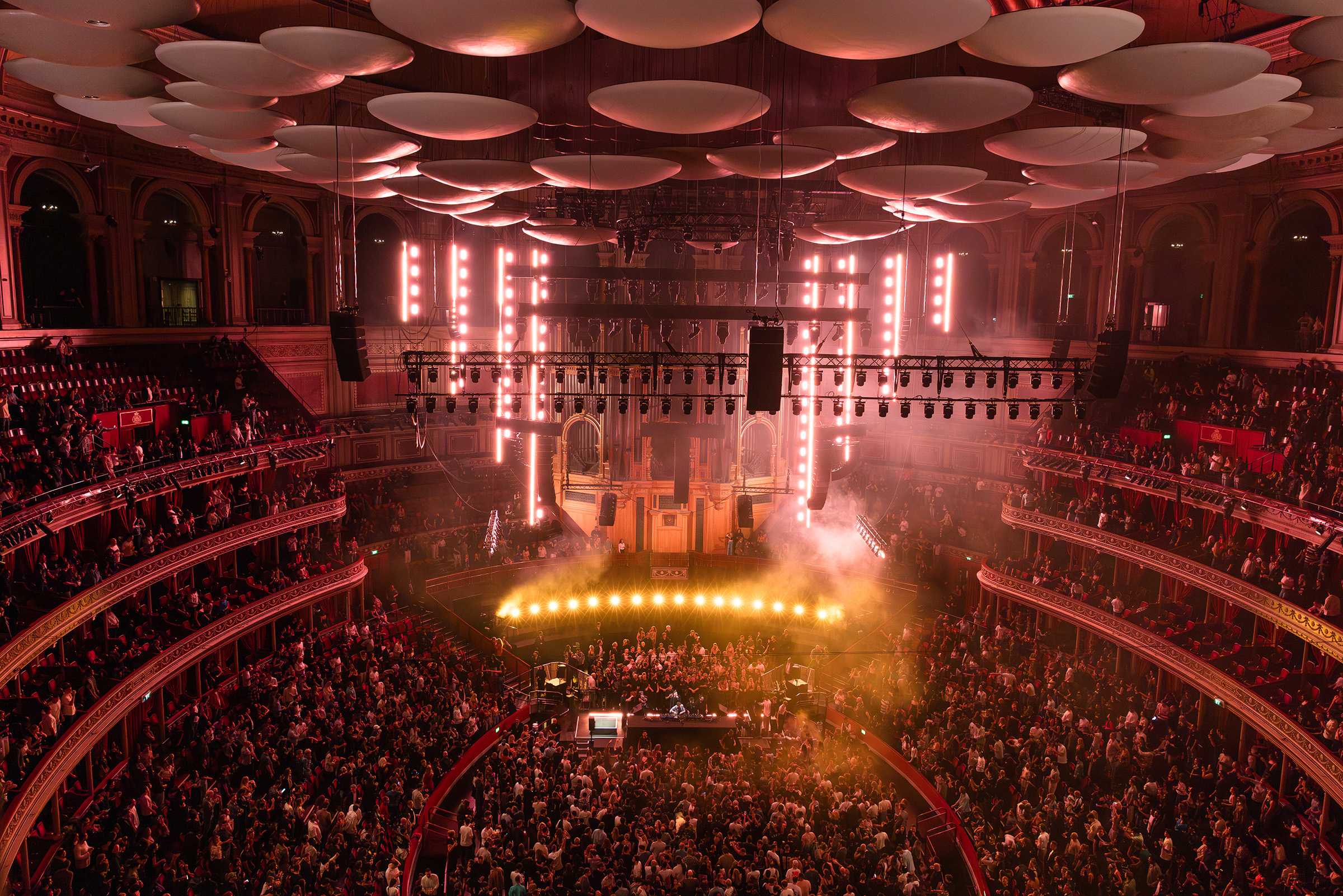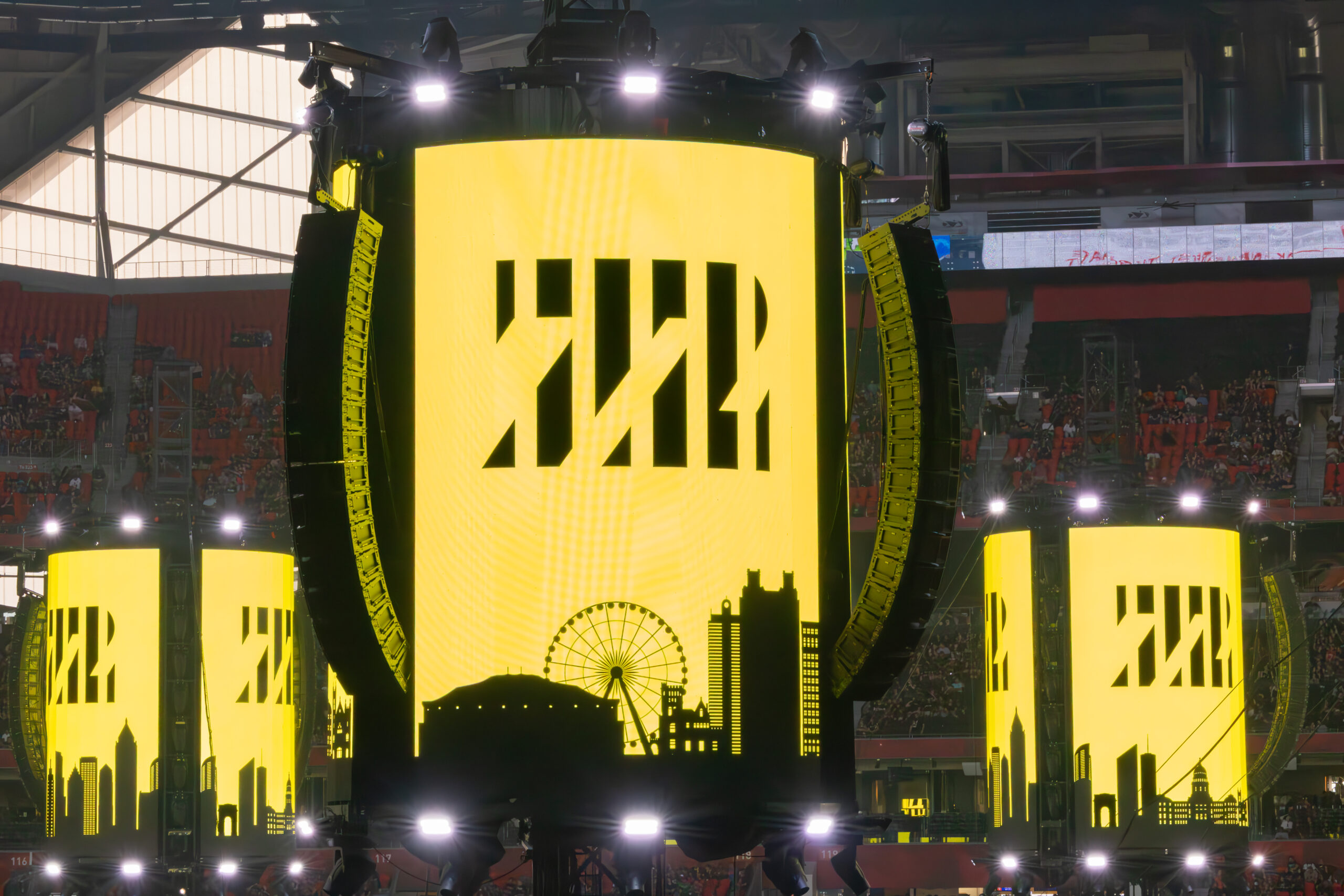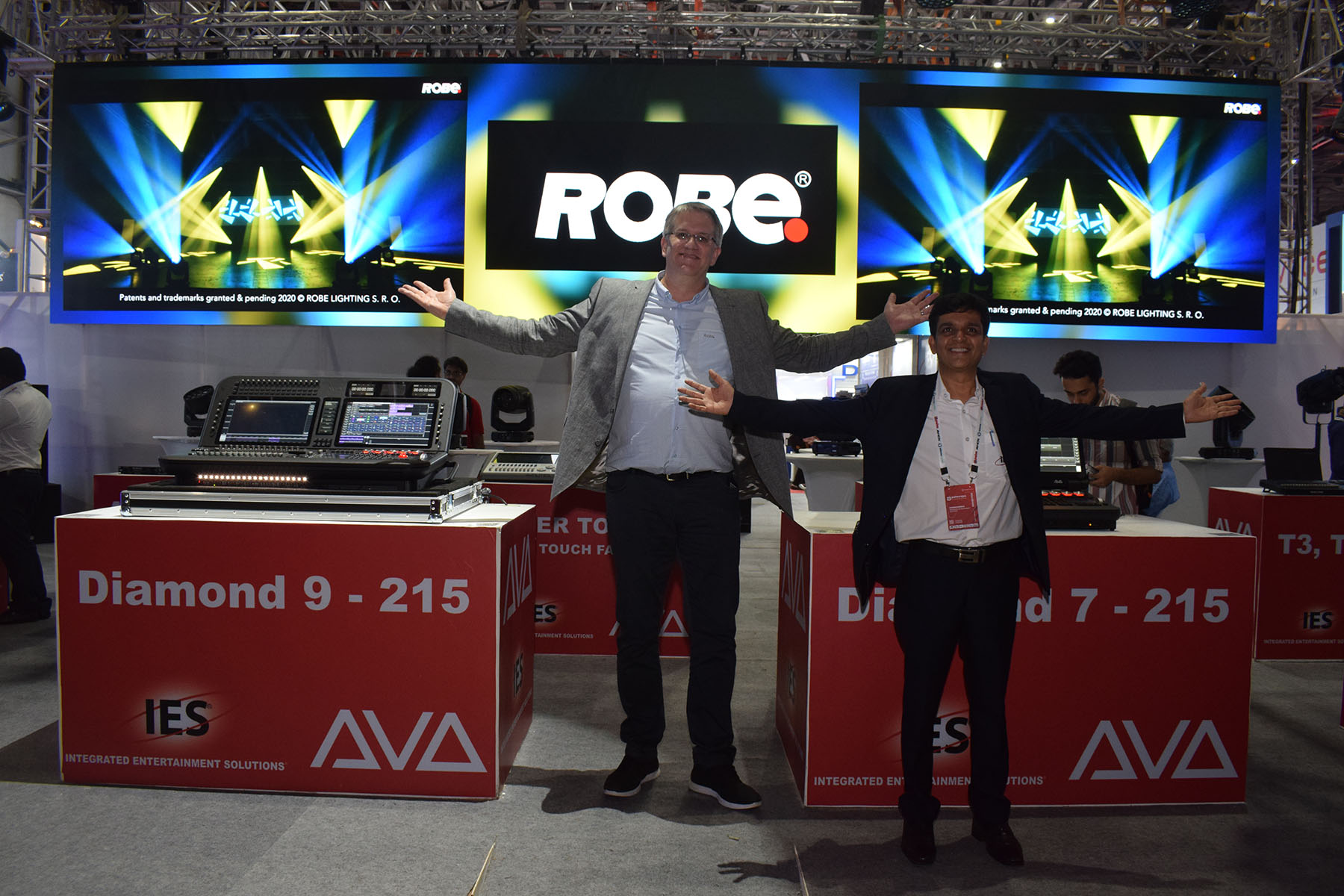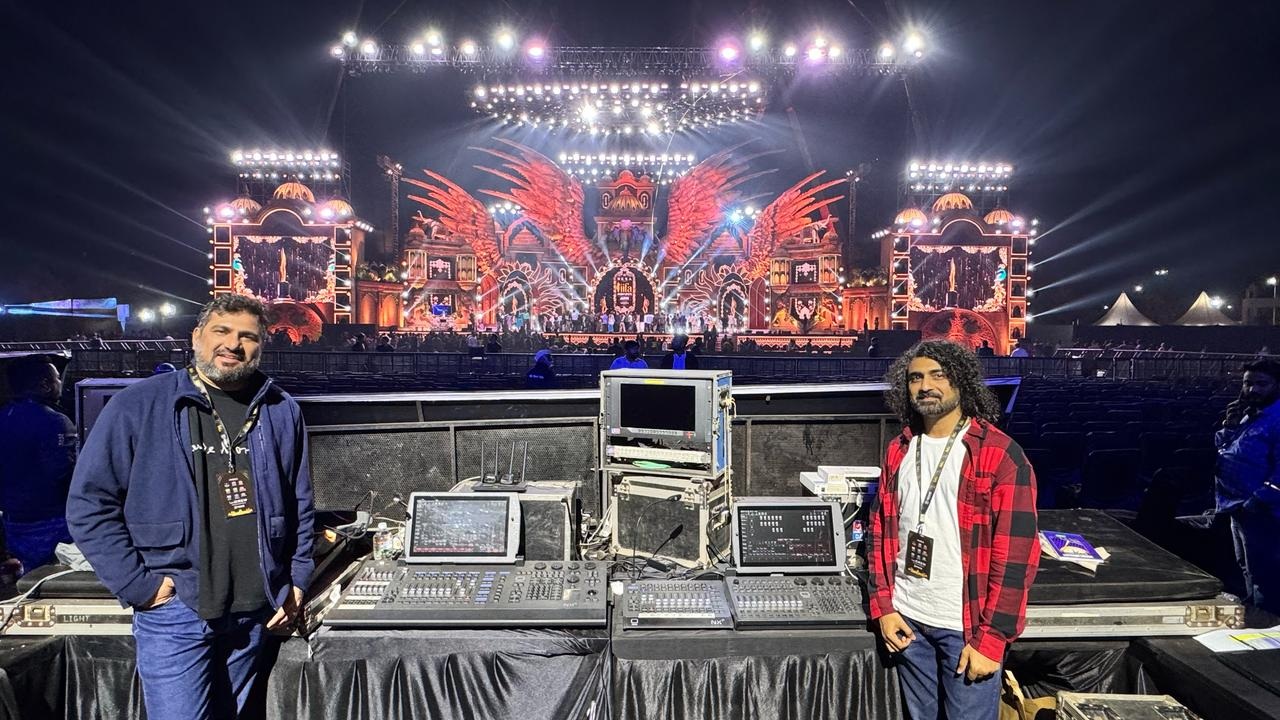CALGARY – Every night during the annual Calgary Stampede a unique performance combination and conversion takes center stage. First, the GMC Rangeland Derby races around the dirt track and then the Grandstand Show, featuring The Young Canadians, caps off each night. As this conversion between race and extravaganza takes place, crew members are taking part in a finely-tuned, choreographed routine. Designer Pierre Marleau specifies VARI*LITE luminaires, supplied by Epic Production Technologies.
More details about Vari-Lite (http://www.vari-lite.com):
VARI*LITE Overcomes Challenges at Calgary Stampede
CALGARY – Every night during the annual Calgary Stampede a unique performance combination and conversion takes center stage. First, the GMC Rangeland Derby races around the dirt track and then the Grandstand Show, featuring The Young Canadians, caps off each night with the production “TransAlta Lights Up the Night.” As this conversion between race and extravaganza takes place, crew members are taking part in a finely-tuned, choreographed routine.
Controlling the lighting is designer Pierre Marleau, who has worked with the production since 1996, and who today depends on VARI*LITE luminaires from Philips Vari-Lite, supplied by Epic Production Technologies.
“We have a scenario in that there are chuck wagon races that happen first and then we do a quick conversion in about 26 minutes from a racetrack to a large entertainment stage,” began Marleau. “After the races, we have a portable stage that gets hauled in weighing about 380,000 lbs. and measuring 100’ long x 40’ tall. We bring it slowly down a track system at precisely 1.2 mph and it takes about 10 minutes to make the complete trip to connect with our main stage, which is a concrete platform with a sprung-floor on top. Once connected, we do the show.”
When the production first began in 1967, the lighting consisted of 48 PAR Cans and 10 5K Fresnels. Today, the production has expanded into a 3-arch structure, two 10’ x 20’ elevators, one 6’ x 40’ elevator, two large LED screens on each side of the stage, pyrotechnics, 340 artists consisting of circus performers, trampoline acts, aerialists and a dance troupe called “The Young Canadians.” While the success and growth of the show has enabled the lighting design to fully blossom, it has not come without its own set of challenges such as time of day, throw distances, and the flexibility and dependability needed from the lighting instruments themselves.
“There are challenges with this show,” Marleau said. “The first being that when the show actually starts at 10 pm it’s still bright daylight. Then by 10:45 pm it starts to get just dark enough where a handful of lights become visible. Part of the design process starts by figuring out how to create a visual impact in broad daylight. We begin the show with a lot of color and light out toward the audience, and then as the night begins to fall we bring in more gobos and fog to accentuate the light rig.”
Marleau continued, “Another significant challenge is that we are without a lighting grid, which makes trying to light the show pretty hard with FOH locations located roughly 120’ away from the front of the stage and 200’ from the back of the stage. Finding a fixture that can change color, offer a gobo, bring texture when you need it, be reliable, and hit its mark every single time gets to be quite challenging.”
“The final challenge to lighting would be that every act and performance has a producer, choreographer and director. It takes about three months of rehearsal in an arena where I will go around speaking with everyone involved, including the costume designer, to get a true feel for each act to assess what type of lighting will be a good fit. Does it need to be dramatic or is this a lighter moment? Once I have a feeling for all the acts then we have the inspiration for how the show design will go.”
With all his challenges clearly identified, Marleau next turns to his design team make sure he has the right gear from Authorized VARI*LITE Dealer Epic Production Technologies.
“When we first started talking to suppliers about how we wanted to handle the lighting and the changeover, many thought we were crazy and said that it couldn’t be done, except for Epic. I have worked with Epic for years and they have always been a big part of my success and the success of the shows I’ve designed. They understand the design process and the journey the designer goes on, and they go out of their way to help. They’re not just a shop with gear on the shelf, they know what needs to happen and they make it happen.”
So with Epic on board once again, Marleau set out working with Tracey Ploss to select the exact fixtures to help him overcome all his design challenges. As he compares the automated fixtures across the market, one family of lights seems to stand out as his clear-cut choice: VARI*LITE automated luminaires from Philips Vari-Lite.
“What I love about VARI*LITE fixtures is they have pushed the optics to places where no one else has. You get beautiful colors, the gobos are sharp and crisp, the focus train is amazing and there is really no compromise in the fixtures. As a designer, I can create the show I want without worrying that the fixtures might not stand up to the rigorous demands of this massive outdoor show. I really have confidence that the VARI*LITE fixtures will deliver every time.”
In his complete design for the 2011 edition of “TransAlta Lights Up the Night”, Marleau is using 20 VL3500 Wash, 71 VL3000 Spot, 19 VL2500 Spot and 15 VL2500 Wash luminaires.
“We tried all kinds of fixtures, but our fixture of choice for the front of house locations is the VL3500 Wash. The color mixing is smooth. We are able to use 12 of these fixtures to light the complete stage and they perform very well. Before this, we would have to hang about 400 Par Cans with scrollers for front of house. Today, we hang 12 VL3500 Wash fixtures then we layer 12 VL3000 Spots in with them for gobo texture and to be able to pick the aerial performers. It’s an amazing technological progression and it looks great.”
“Next we use the VL2500 Spot fixtures quite a bit on our mid-arch, which is about 25’ off the deck. They provide incredible textures and highly visible beams that easily cut through the smoke. Then we use the VL2500 Wash fixtures as a footlight to pick up some extra color on the aerialists and some other specials upstage. I love using both these lights because the price is right and they do a great job at allowing me to get a few more points of light in the smaller or tighter spaces on the set.”
With all his design challenges met, there is still the question of producing an outdoor extravaganza with no roof and exposing the lighting to the elements night after night. It is out here that they will show their true value and worth, and that is exactly what the VARI*LITE luminaires are doing.
“Without a roof on the structure, the lights remain uncovered at all times, and the VARI*LITE fixtures stand up to the harsh environment and outperform other products hands down. We have had to actually run them under heavy rain and they never shut down. We developed ways to cover the ballasts and the fans so that they are a little more protected from the weather, but sometimes we might have to program in steady rain for five to six hours and nothing on the VARI*LITE fixtures trips. They just keep on working. It’s mind boggling and they are quite amazing.”



